Salvation Army Emergency Response to Hurricane Sandy
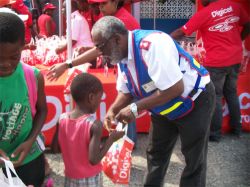
Distributing food and water in Jamaica. Scroll down for more images. (photos courtesy of IHQ Editorial)
WHILE Hurricane Sandy – one of the largest storms the Caribbean and the east coast of the USA has ever experienced – was still causing devastating damage, Salvation Army emergency teams were already providing relief. Initially shelter, food, water and counselling were the main forms of assistance provided and this has continued.
Throughout the Caribbean the unceasing torrential rain and 90 mph winds decimated homes and crumbled structures, as fallen trees and utility power lines made roads impassable and destroyed crops, livestock and farmlands. Early assessment by Salvation Army disaster relief teams indicated that this category one hurricane had left the islands of Jamaica, Haiti and the Bahamas in ruins.
In Haiti, where at least 10 people have been killed, this latest disaster has stretched the resources of local Salvation Army personnel who are still serving those impacted by the earthquake and Hurricane Isaac. In the Bahamas, Hurricane Sandy’s driving rains and heavy winds knocked out power, flooded roads and cut off inter-island communication.
Salvation Army properties also suffered damage. In Jamaica, the School for the Blind lost the roofs on several of its dormitories and walkways and all of its banana and plantain crops were destroyed. The Salvation Army headquarters in Haiti also reported that its buildings in Poirrier, Lafosse, Vieux Bourg, Fond-des-Negres and Campeche were severely damaged.
But even in these moments of distress, Salvation Army teams set aside their own problems to assist others. During the eye of the storm, Salvation Army officers and volunteers were out on the streets transporting homeless men to shelters, serving food to those evacuated and providing pastoral care and counselling to those traumatised by the disaster.
Cuba was also badly affected by the hurricane with 11 people killed and widespread flooding and damage during its five hours in Cuba. The Salvation Army is supplying food, shelter and water to those who are displaced and has already begun working on providing temporary shelters for those who lost their homes.
From the Caribbean and Cuba Hurricane Sandy moved violently along the United States of America east coast, leaving mass destruction and power outages in its wake. Even before it arrived The Salvation Army in the USA prepared for a long-term disaster response and recovery operation. Feeding of displaced people commenced immediately at shelters in the north-east and mid-Atlantic regions and mobile canteen units have been deployed to the areas of greatest need. Crews are providing food, hydration and clean-up kits as well as emotional and spiritual care.
New York city officials, from the Office of Emergency Management, have appointed The Salvation Army as the lead agency for the city’s food access plan which coordinates feeding programmes at city shelters. This includes serving meals to 1,000 people at Seward High School in lower Manhattan for the next few days.
Elsewhere in New York the Army has provided food and shelter assistance at two locations in Albany and on Long Island. The Salvation Army is also assisting the American Red Cross with distribution of supplies to eight shelters.
In New Jersey The Salvation Army is serving meals, snacks and drinks to hundreds of evacuees at 11 shelters in five counties. This emergency work is not without danger. At a shelter in Union Beach, a Salvation Army canteen and a volunteer vehicle were flooded when waters rose unexpectedly. Despite the loss of these vehicles volunteers continued to serve meals to both displaced residents and other emergency workers. A Salvation Army canteen is working with the New Jersey state official search and rescue team.
An innovative relief programme is operating at Montclair where The Salvation Army has organised a ‘charging’ centre for people who need to charge their phones, computers or other electronic devices.
Meals are being provided to people in 15 shelters in Pennsylvania and Connecticut and The Salvation Army is also running shelter and feeding programmes throughout parts of western Maryland and West Virginia where more than two feet of snow has left thousands without power in frigid temperatures.
Relief teams are active in north east Ohio, New Hampshire, North Carolina and Virginia, serving within shelters and from mobile canteens. ‘It’s clear that Hurricane Sandy was, and continues to be, a major storm impacting millions of people,’ said Major George Hood, National Community Relations Secretary for The Salvation Army in the United States. ‘Residents of the impacted areas can rest assured that The Salvation Army will be with them for the long-haul – providing practical, physical and spiritual support at the areas of greatest need.’
Story courtesy of IHQ Editorial.
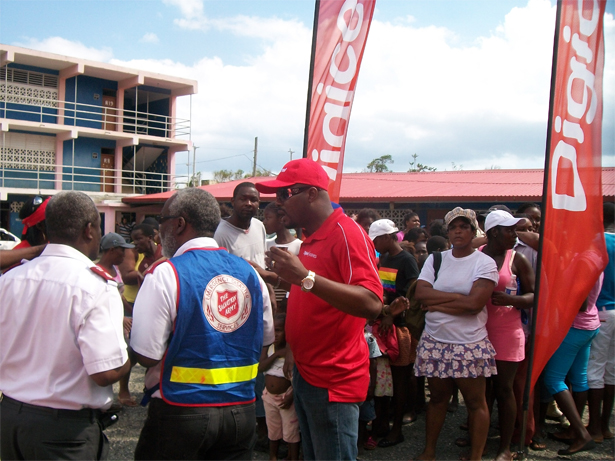
The Salvation Army collaborated with Digicel Jamaica to distribute food hampers and water.
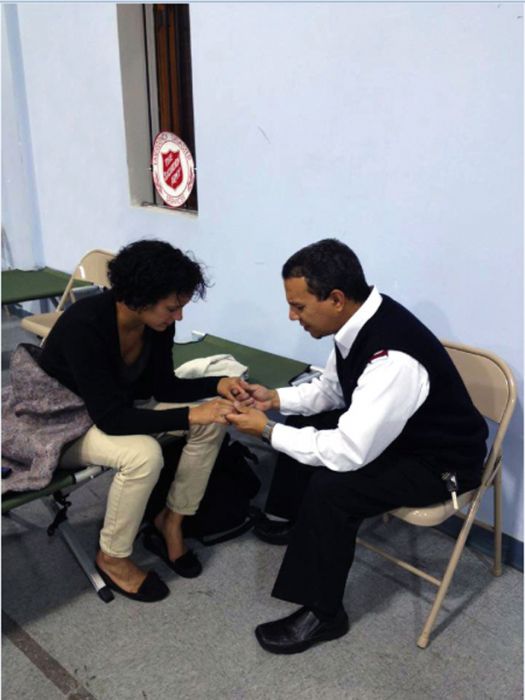
Major Israel Acosta sits with an Albany, NY resident in a shelter set up at the Salvation Army Albany Center during the peak of hurricane Sandy.
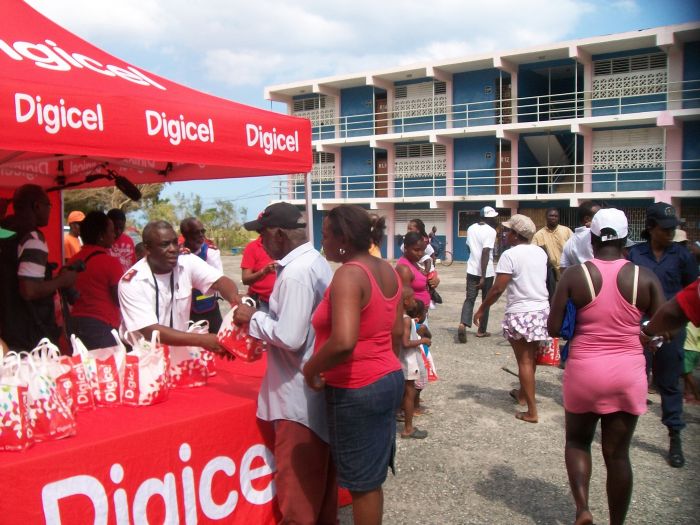
The Salvation Army collaborated with Digicel Jamaica to distribute food hampers and water.
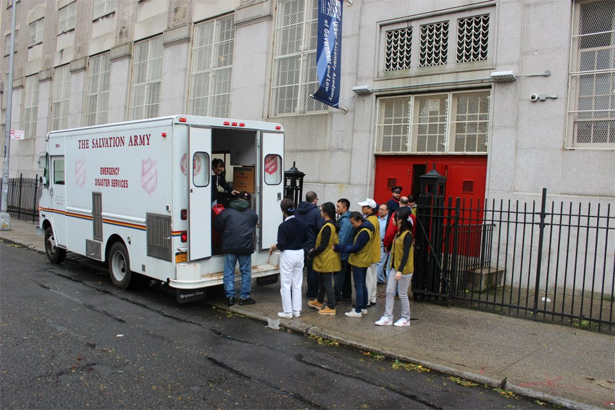
Unloading a Salvation Army emergency vehicle in New York.
Comments
No comments yet - be the first.